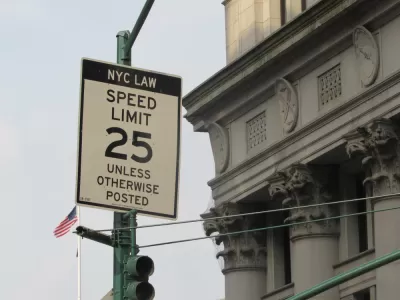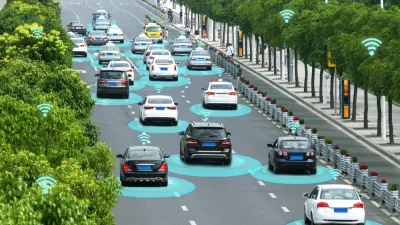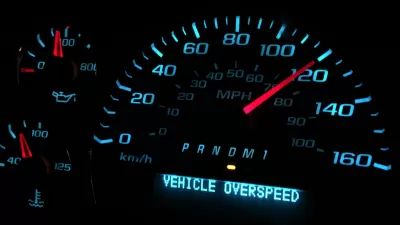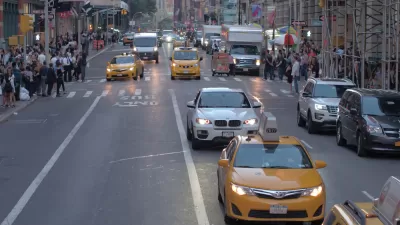Advocates hope the city’s plan to install speed governors on part of its municipal fleet will prompt other cities and government agencies to follow suit.

Because regulating the design of cars and trucks is the purview of the National Highway Traffic Safety Administration (NHTSA), local and state governments in the United States don’t have the power to require safety features not included in federal law. But as David Zipper writes for Bloomberg CityLab, “an intriguing move in New York City suggests a possible workaround: Even if cities and states can’t regulate motor vehicle design, they still wield power over their own sizable fleets.”
A pilot program announced by New York City Mayor Eric Adams last week will install speed governors on 50 city-owned cars. As Zipper explains, “intelligent speed assistance (ISA) uses geolocation to adjust the allowable speed as the posted speed limit changes during a journey. If a driver hits the maximum threshold, the ISA system applies resistance to the accelerator and makes it more difficult (if not impossible) to go faster.”
The program, if expanded to more vehicles, could bring an added benefit by setting the tone for other drivers. “A handful of vehicles driving at the speed limit can force those behind them to follow suit, amplifying safety benefits.”
The article quotes National Transportation Safety Board Chair Jennifer Homendy, who is supportive of cities making similar efforts to install ISA in municipal fleets. “I think it would move the ball forward to get this technology in the market,” Homendy said, which could encourage automakers to make the feature available on more vehicles. As Zipper concludes, “As with seatbelts, airbags and other once-controversial safety advances, driver familiarity could make it easier for Congress and NHTSA to make them mandatory, as Europe has.”
FULL STORY: Why New York City’s Car Safety Pilot Is a Big Deal

Manufactured Crisis: Losing the Nation’s Largest Source of Unsubsidized Affordable Housing
Manufactured housing communities have long been an affordable housing option for millions of people living in the U.S., but that affordability is disappearing rapidly. How did we get here?

Americans May Be Stuck — But Why?
Americans are moving a lot less than they once did, and that is a problem. While Yoni Applebaum, in his highly-publicized article Stuck, gets the reasons badly wrong, it's still important to ask: why are we moving so much less than before?

Using Old Oil and Gas Wells for Green Energy Storage
Penn State researchers have found that repurposing abandoned oil and gas wells for geothermal-assisted compressed-air energy storage can boost efficiency, reduce environmental risks, and support clean energy and job transitions.

Minneapolis Bans Rent-Setting Software
Four cities have enacted restrictions on algorithmic software that can inflate rent costs.

Oakland to Add 244 New EV Chargers
Oakland plans to launch its new charging network at eight locations by the end of 2025.

Jane Goodall Inspires with Message of Hope, Resilience, and Environmental Action
Speaking in Pasadena, Jane Goodall offered a hopeful and inspirational message, urging global compassion, environmental responsibility, and the power of individual action to shape a better future.
Urban Design for Planners 1: Software Tools
This six-course series explores essential urban design concepts using open source software and equips planners with the tools they need to participate fully in the urban design process.
Planning for Universal Design
Learn the tools for implementing Universal Design in planning regulations.
Heyer Gruel & Associates PA
City of Moreno Valley
Institute for Housing and Urban Development Studies (IHS)
City of Grandview
Harvard GSD Executive Education
Salt Lake City
NYU Wagner Graduate School of Public Service
City of Cambridge, Maryland





























